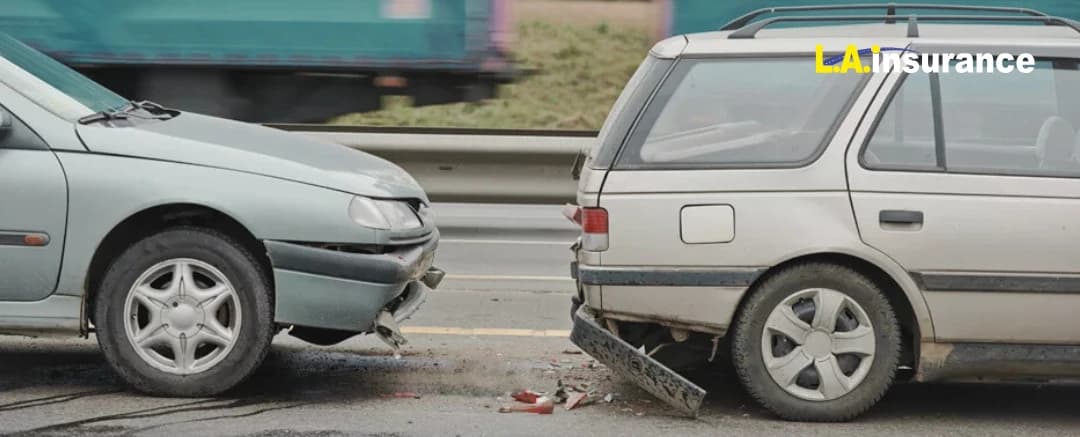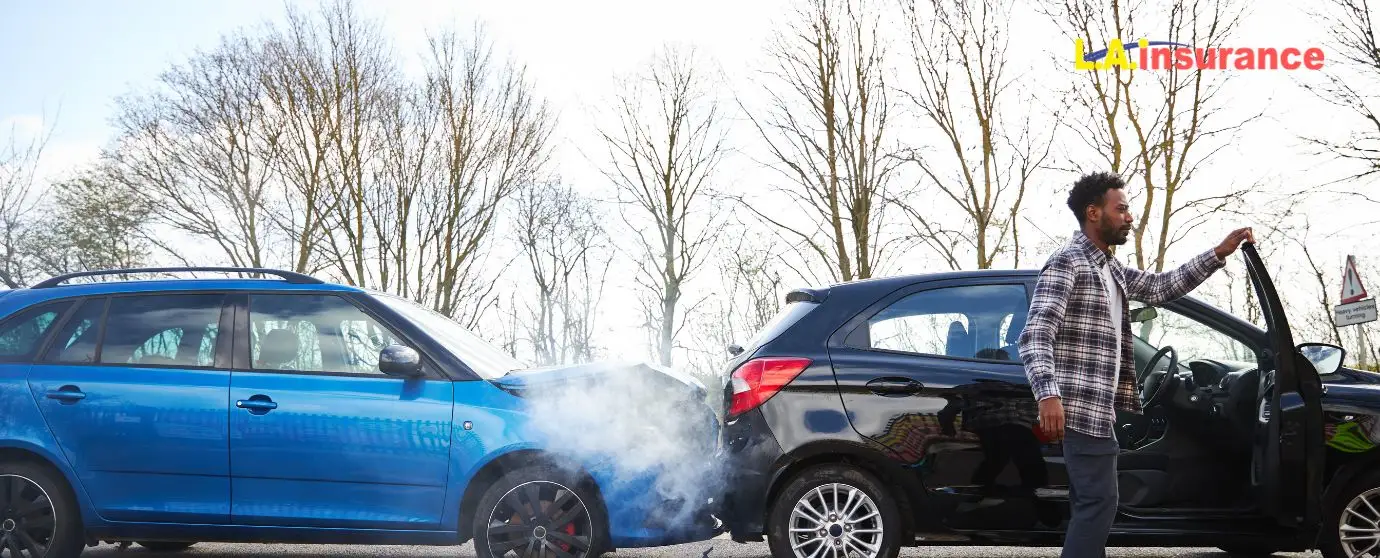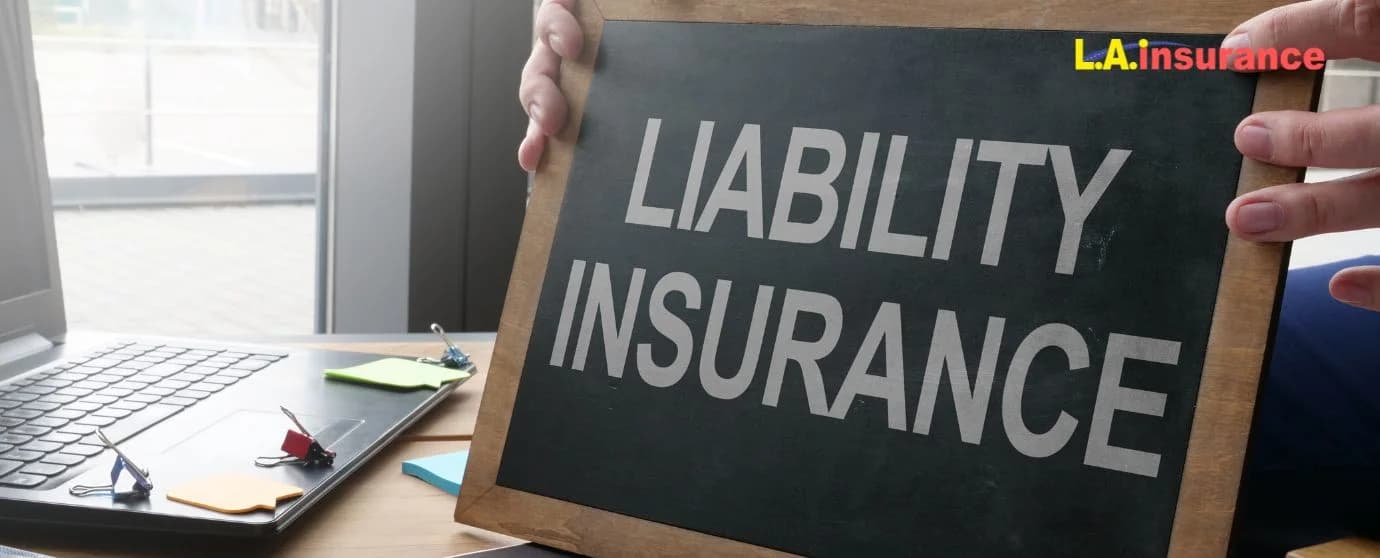
Publish Date: 03-05-2025
Auto Insurance
Last Updated: 11-05-2025
Should I Have Collision Insurance on a 10-Year-Old Car?
If you drive an older car—maybe 10 or 20 years old—you might be considering dropping some coverage to save a few hundred dollars. Since liability-only insurance is mandatory, you’re likely debating whether to keep or drop collision coverage. There is no short answer to it. It depends on your financial situation, your car’s actual cash value, insurance cost, loan or lease status, deductible vs. payout, and your driving habit.
For example, if your 10-year-old vehicle is worth more than a few thousand dollars, it makes sense to keep collision coverage. But if the car is worth less than what you are paying for collision insurance, it may be time to reconsider. In this case, factors like depreciation, your deductible, and how much you can afford for repair or replacement play a crucial role. Keep reading to learn whether someone should keep collision insurance on a 10-year-old vehicle.
Is It Worth Having Collision Insurance on a 10-Year-Old-Car?
As we mentioned earlier, it depends. For most drivers, keeping collision insurance on a 10-year-old car comes down to cost vs. benefits. By this point, your vehicle has likely lost a significant portion of its market value due to depreciation.
In fact, according to Kelley Blue Book, a vehicle’s value depreciates 20% in its first year of ownership. So, in 10 years, your vehicle’s depreciation rate could go up by 60% to 90%, depending on the mileage, driving habits, and vehicle’s durability.
Let’s say you have purchased a passenger car 10 years ago worth $45,000. By now, your car is worth $18,000 to $4,500, assuming a depreciation rate of 60% to 90% over the decade.
Now let’s look at collision insurance costs. Depending on factors like your state, driving record, and insurance provider, you could be paying anywhere from $300 to $900 annually for collision coverage. The national average for collision insurance in 2025 is estimated at $814 according to Forbes.
So, is it worth keeping collision insurance? Well, in this case, if your vehicle is still worth $18,000 or more, and you don’t have enough savings to cover a total loss, you should have collision insurance on your 10-year-old vehicle. It would be value for money.
However, if the depreciation rate is too high, let’s say 90%. Then your car's worth is only $4,500 after 10 years. If you pay on average $814 per year for collision insurance, it means you’re paying about 18% of your car’s value just for insurance before considering the deductible amount. (which could be another $500-$1,000). In this scenario, it won’t be a practical decision to keep collision insurance any longer.
Instead, if you consider yourself a safe driver with no history of accidents, and you have enough money saved to handle repairs or a down payment on a new car, you could drop collision insurance and use those savings elsewhere.
Learn More: What Is Collision Insurance and What Does It Cover?
When Keeping Collision Insurance on a 10-Year-Old Vehicle Makes Sense
If your vehicle holds most of its value and is still worth a few thousand dollars, then you can simply continue to pay for collision insurance. According to the ValuePenguin study, the Honda Civic's depreciation rate is the lowest. Within 5 5-year period, it loses only 29% of its value. Whereas the Toyota Corolla, Chevrolet Malibu, and Ford Fusion lose 34% of their value year over year. If you own a vehicle that depreciates slowly, and still holds a good value, you'd better carry collision insurance even if it’s 10 years old.
Here are a few situations where holding onto collision coverage could still be worth your investment:
- Your car is still worth a decent amount. Check its actual cash value using Kelley Blue Book. If it’s valued at over $5,000, keeping collision insurance might be worth it.
- You can’t afford expensive repair bills. If your vehicle is totaled and you don’t have savings for a down payment on a replacement, collision insurance could protect you from a major financial hit.
- You have a history of accidents, DUI, few citations. If you’re a high-risk driver or drive frequently in high-traffic areas, the chances of needing collision coverage increase.
- Your loan or lease requires it. If you’re still financing your vehicle, your lender might require you to carry collision insurance which is part of full coverage auto insurance.
If you still need to maintain collision auto insurance on your old vehicle, contact L.A. Insurance. We provide affordable full coverage auto insurance across many states in the United States, including Michigan, Colorado, Florida, Nevada, Texas, Arizona, and Georgia.
We specialize in being the most reliable and affordable insurance agency. If you need any help related to auto insurance, call us at (800) 893-9393. You can also find an agent or get an auto insurance quote online instantly and insure your vehicle on the same day.
When It’s Time to Drop Collision Insurance
On the flip side, keeping collision insurance on a 10-year-old car might not be worth the expense if:
- Your car is worth less than what you pay in premiums. For instance, if your insurance policy costs $1,000 per year and your vehicle is only worth $3,000. You should drop collision coverage.
- You have a high deductible. A deductible of $1,000 or more means that even if you file a claim, the insurance payout may not be much higher than what you’re paying out of your own pocket.
- You can afford to replace your car. If you have sufficient savings or a backup vehicle, you can decide to withdraw collision auto coverage and save a few hundred dollars.
- Your driving habits lower your risk. If you rarely drive, avoid high-traffic areas or park in safe locations, your chances of accidents drop significantly. In such a case, you may consider canceling collision coverage.
Learn in detail: When to Drop Collision Insurance?
Carrying Collision Insurance on Older Vehicles: Recap
Sometimes, you should carry collision insurance on older vehicles, and sometimes you shouldn’t. It all depends on the current value of your vehicle and the cost of collision coverage. If the value of the vehicle and the collision insurance cost justify it, then yes, you should carry it. Otherwise, dropping collision insurance on a highly depreciated vehicle, roughly 10 years old, is the right financial decision. We would recommend dropping the coverage if you find out that your car is worth less than $5,000 and you’re paying $814 per year for collision insurance. Additionally, if you can afford total repairs or minor to major repairs for your vehicle, then you don’t need to spend a few hundred dollars on auto collision insurance.
Learn more about different types of car insurance coverage. If you’re inquisitive, broaden your knowledge by checking out the following relevant articles:
- What Is the Difference Between Collision and Comprehensive Insurance
- Do You Need Full Coverage on a Financed Car?
Frequently Asked Questions (FAQs) on Related Auto Insurance Coverage on Old Cars
Do I Need Collision Insurance on an Old Car?
As we have said, it depends on the car’s worth and your ability to cover repairs or replacement. If your vehicle has low market value, the cost of collision insurance would outweigh its benefits by exceeding the insurance payout. But if the car is worth enough, or you lack savings, you can simply continue to carry collision insurance.
How Much Is Collision Insurance?
According to the Insurance Information Institute (III), collision insurance costs only $300 per year. However, the rate could vary a lot. As per Forbes data, drivers pay on average $814 per year for collision insurance in 2025. However, Insurance.com reports that the average annual cost of collision car insurance is $723. Based on our analysis, you are most likely to pay around $300 to $900 annually depending on the state you live in, your driving record, and the insurance company you choose.
Should I Have Collision Insurance on a 20-Year-Old Car?
Yes, you should drop collision coverage on a 20-year-old car unless it’s an antique vehicle that you regularly drive. In most cases, a 20-year-old vehicle experiences depreciation of around 90% to 99% of its original value. So, if the vehicle’s value is too low, the insurance payout won’t cover much beyond a deductible. That’s why if you still drive a 20-year-old vehicle and can afford a total loss, you should drop collision coverage immediately.
Should I Have Full Coverage on a 15-Year-Old Car?
If you have a history of accidents, citations, license suspensions, DUIs, or any traffic tickets that are still have on your driving record, you might be paying some of the highest insurance rates for your full coverage policy. In the case of a 15-year-old vehicle that has lost most of its value, spending money for full coverage isn’t necessary. Instead, simply maintain liability auto insurance for the vehicle to comply with the state regulations. However, if your vehicle is an antique museum car/classic car/collector’s car that you drive often, you might still consider keeping full coverage. But overall, it isn’t recommended to maintain full coverage on the 15-year-old vehicle.
Do I Need Comprehensive Insurance on an Old Car?
If your car is worth more than a few thousand dollars, and you live in an area highly prone to theft, vandalism, hail, and extreme weather hazards, then yes, you should get comprehensive coverage even for an old vehicle. However, if your vehicle’s value is low and you can afford any potential out-of-pocket expenses, you can drop the coverage.
Tag :
Comercial Auto
Auto insurance








